Tropical Seedologist
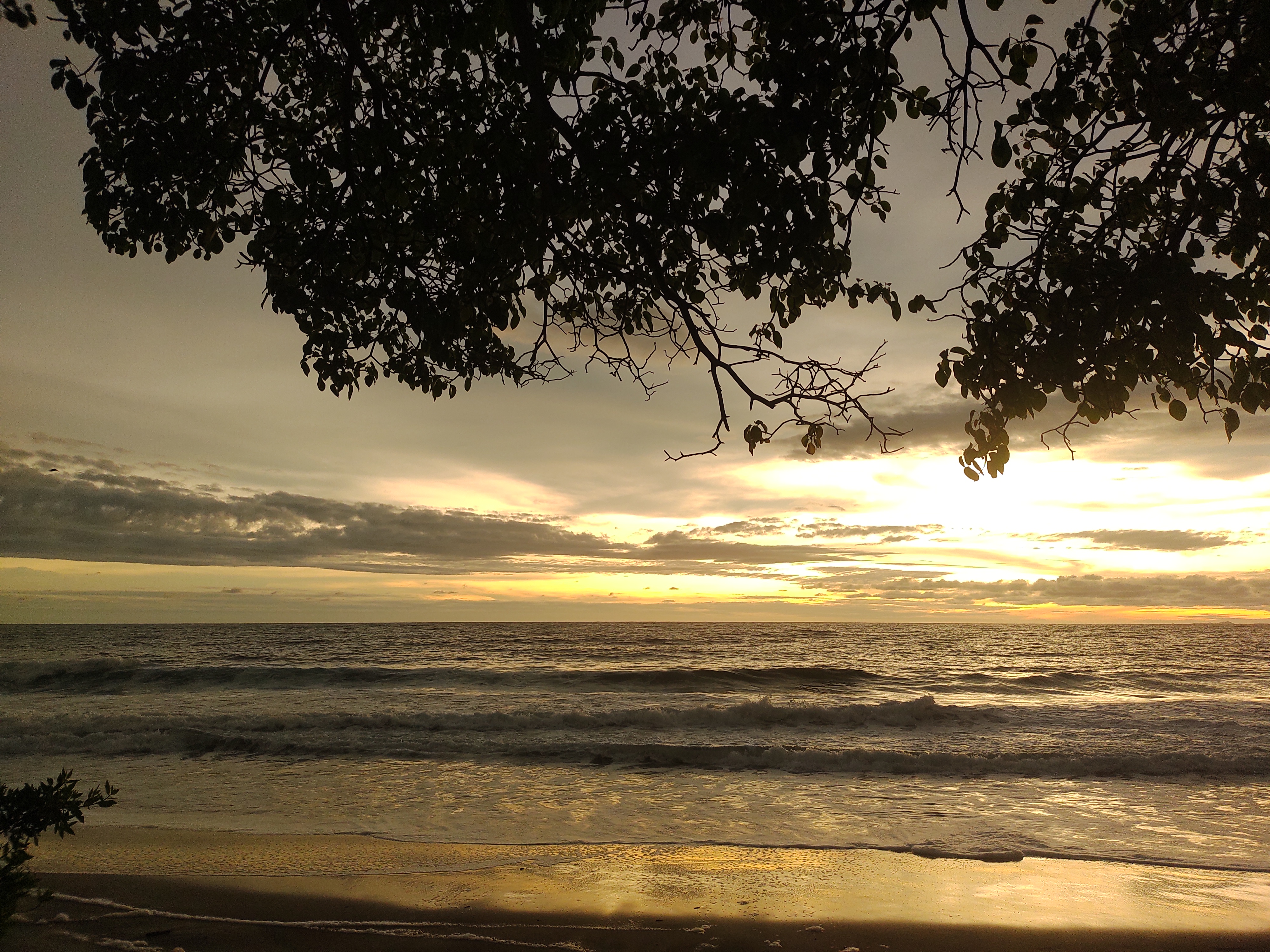
Welcome to Tropical Seedologist, a blog where I share stories about my journey to becoming a tropical seed scientist. I want to show you the fascinating world of seeds so that we can all become as interesting as seedologists are (at least, in my opinion!).
Each month, I will post a short blog entry in both English (and soon in Spanish too). I’m excited you’re here! If any of these stories resonate with you, or if you have a question or a project related to seeds, seedlings, natural regeneration, or forest restoration, please don’t hesitate to reach out. I’d love to hear your story, too! You can find my contact information on the contact tab.
A Quick Tip: If you’re new to the blog, I highly recommend starting with the first post at the bottom of the page and reading in order. If you came here looking for a specific definition, head straight to our Seed Jargony sections, which you’ll find throughout the blog.
Now, let’s start one seed at a time!
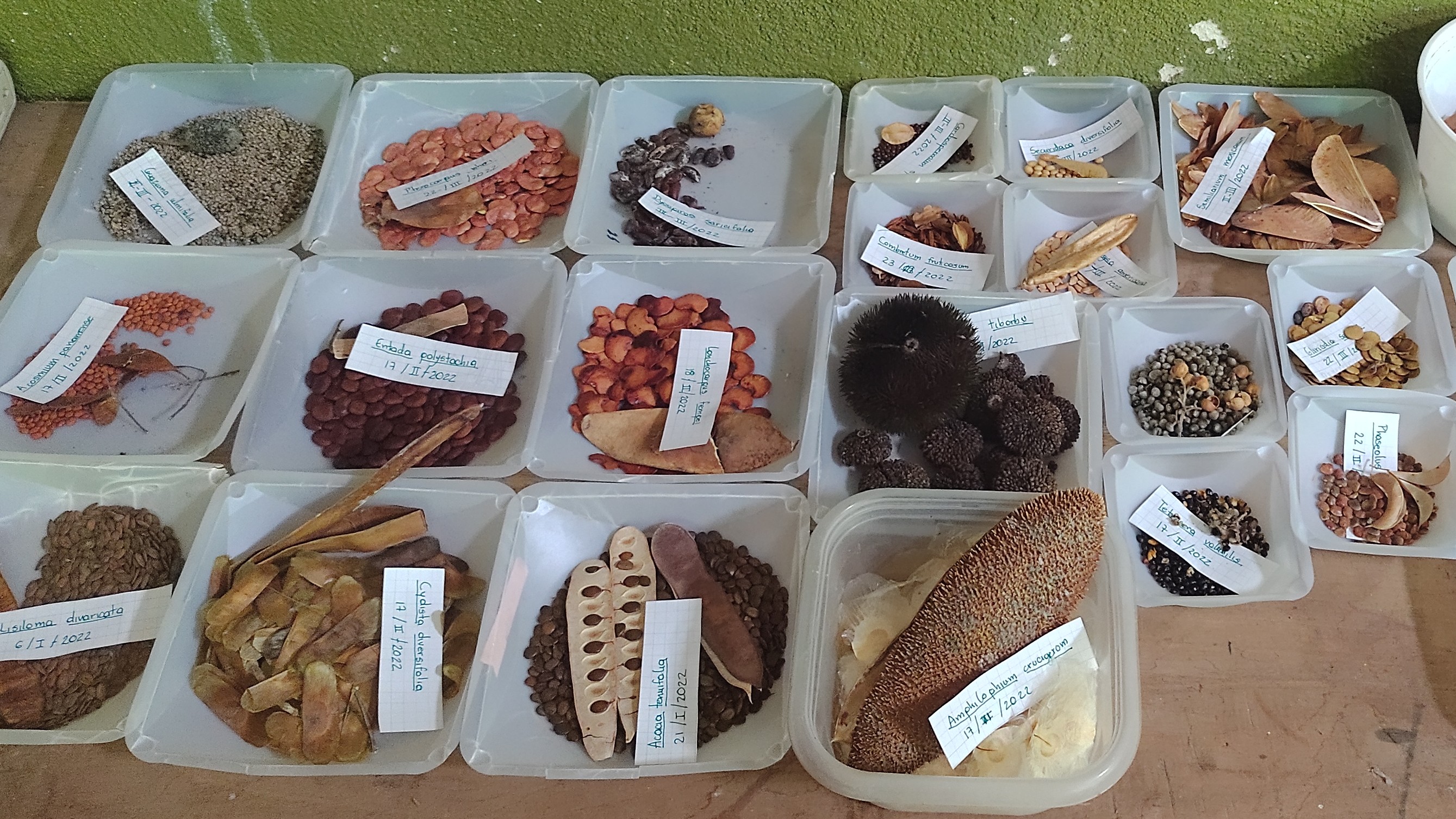
Seed jargony V: Hilum
October, 2025
Remember when I told you that seeds are like baby plants? In that sense, they also have the first scar every human baby has: a belly button! In the seed’s case, this scar is called the hilum. The hilum is precisely the scar on the seed where it was attached to its “mum’s” ovary wall or the funicle (AKA, the umbilical cord). This feature reinforces the concept of treating seeds and fruits as integral parts of a plant’s reproductive cycle and as key subjects for studying a plant’s reproductive strategies. The hilum comes in many sizes, shapes, and colors, and as you’d expect, it’s more noticeable in large seeds. Differences in hilum shapes can even help you identify species or groups of species!
Now, it’s time to cure your plant blindness again! Take a seed or two—no excuses, they aren’t hard to find. Hold it in your hand and try to identify where the hilum is located. Is it noticeable or not? In some seeds, you may also notice another opening. “What? More than one hole?!” you might think. This is only because you haven’t observed nature in detail, and yes, because in some seeds there might be more than one opening. The other one is the micropyle, which is the place through which the pollen tube arrives at the ovule. In some cases, the micropyle is noticeable, and in others, it is not. We’ll talk about that in the next Seed Jargony section.
So now you know more than you did before! And if that doesn’t impress anyone, then they might be very boring. Happy Halloween, and see you in November!
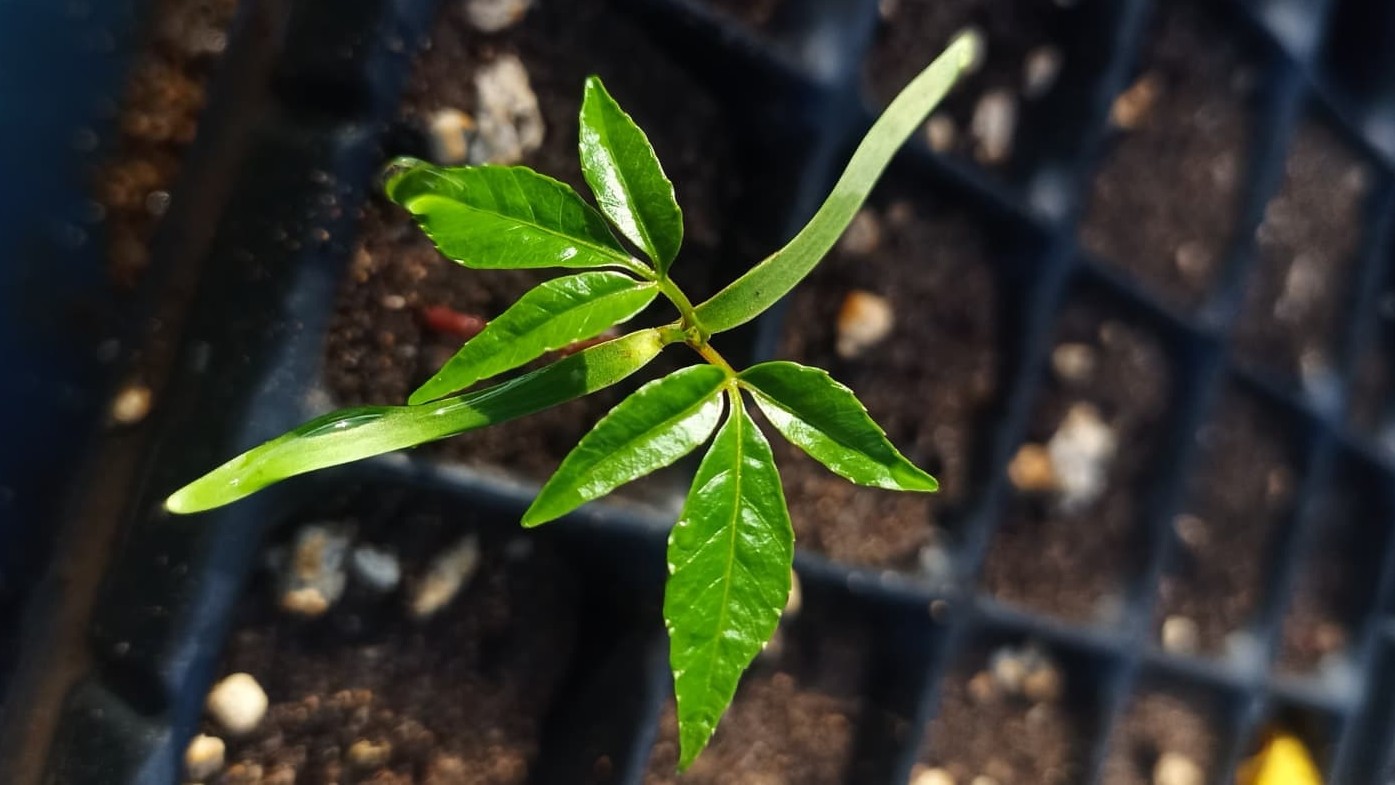
How to germinate: Part I
September, 2025
We’ve arrived at the most decisive part of any plant’s life: germination. It’s an irreversible process—once a seed starts, it can’t be reversed, and growth won’t stop until death. That’s why plants take this so seriously; they can’t just germinate anywhere. Today, we’ll focus not on the decision-making process, but on the three main phases of germination itself: imbibition, the lag phase, and radicle protrusion.
The first phase, imbibition, is when a seed rapidly takes in water. The seed’s tissues have a high solute potential and are ready to be hydrated through osmosis. As soon as the tissues are hydrated, the second phase, or lag phase, begins. In this phase, the rehydrated tissue awakens the entire seed’s metabolism. Hormones, enzymes, and metabolic pathways all “fire up” the engines for what’s to come.
The final phase is radicle protrusion. The embryo begins to grow by expanding its cells, and its embryonic root (radicle) breaks through the seed coat. It’s important to pause here and reflect on this: the embryo doesn’t increase in size through cell division, but through expansion. This means the embryo has been ultra-compressed and tightly packed all along, and its life begins by simply “unwrinkling” and expanding. There are many ways it does this, but we’ll explore those later.
As mysterious and abrupt as it sounds, this process is controlled by many other factors that we’ll explore in the following posts! See you in October!
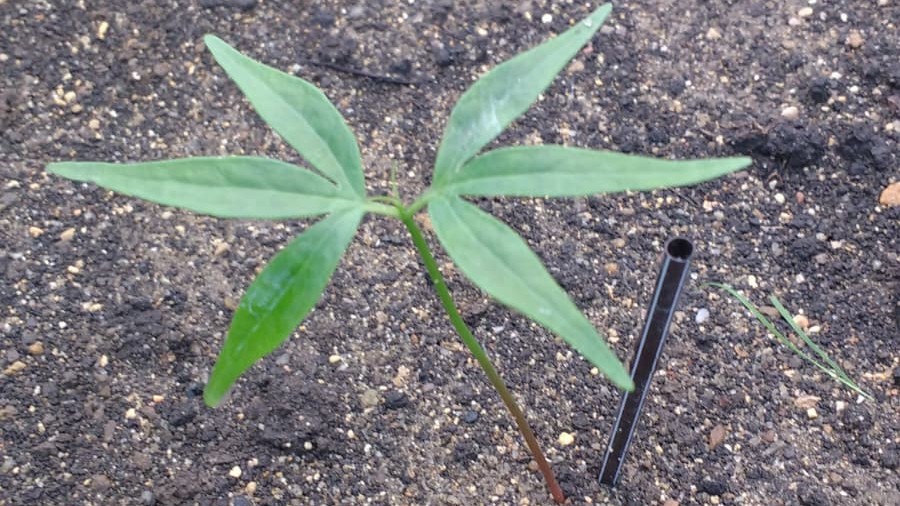
Seed jargony IV: Cotyledons
August, 2025
Cotyledons are among the first structures to emerge when a seed germinates. They are a part of the embryo that stores the nutrients the embryo uses during its first stages of development.
Unlike the endosperm, cotyledons are an integral part of the embryo itself, and their function becomes essential once germination begins.
Nutrient storage: This is their primary function. Since they hold the food reserves the embryo absorbed while growing, they keep this nourishment until germination, allowing the embryo to develop its first parts.
Nutrient absorption: Other cotyledons facilitate the transfer of nutrients from the endosperm to the embryo. The scutellum in many monocots, for example, is a specialized cotyledon that serves this purpose.
Photosynthesis: Some cotyledons emerge above ground and act as the first pair of leaves, or “seed leaves,” ready to start making food through photosynthesis. Other cotyledons stay inside the soil, providing nutrients as needed.
Cotyledons, much like seeds, give their name to a major subdivision of the Angiosperms: the monocots (with just one cotyledon, like grasses) and the dicots (with two cotyledons, like beans). I should clarify that these are merely morphological classifications and don’t necessarily reflect the evolutionary history of the species.
We’ll be talking more about cotyledons in the future when we discuss the different kinds of germination. See you in September!
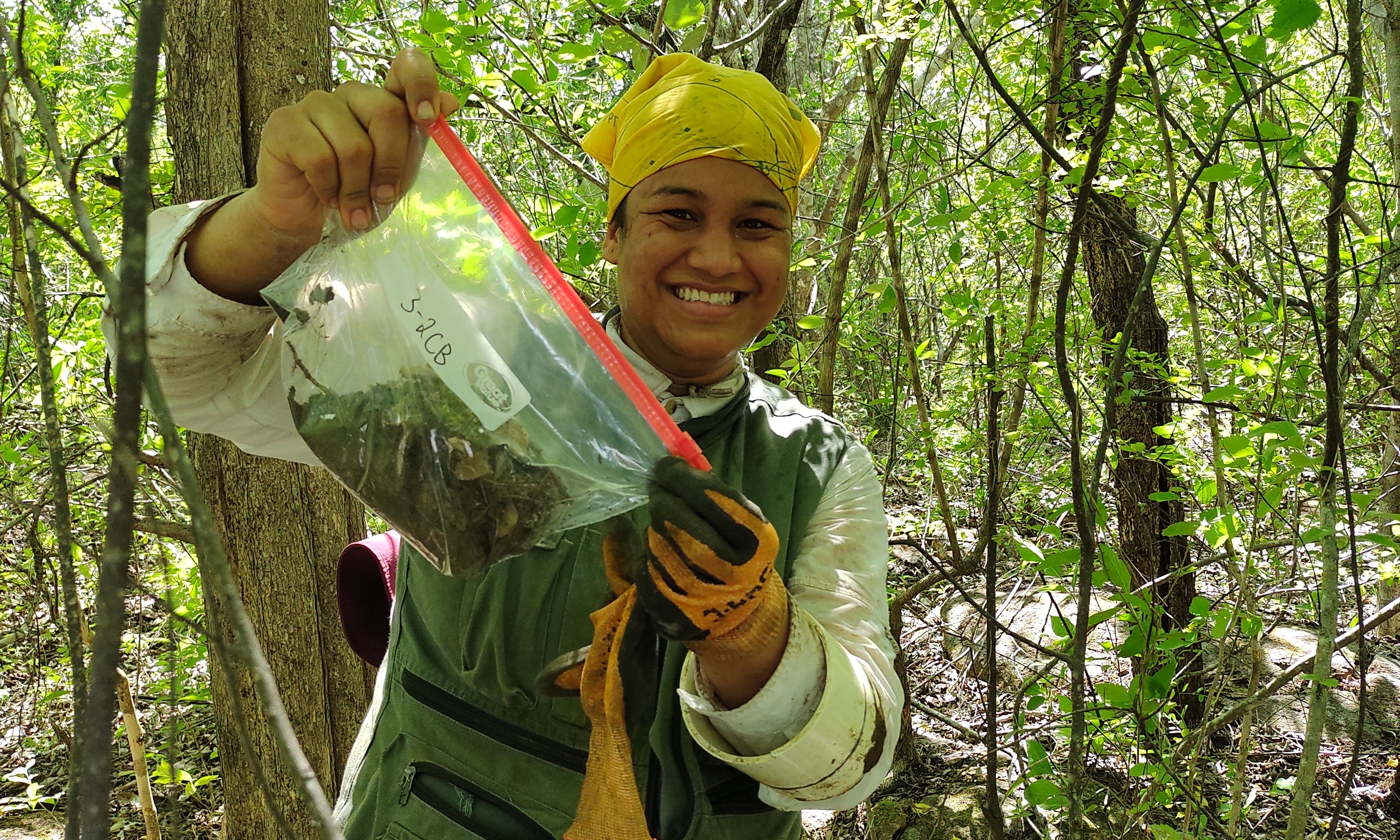
A forest’s savings account
July, 2025
Did you know that plant communities have savings for the future? They do! They’re not too concerned about financial institutions, so they simply bury their savings in the soil like a pirate’s treasure. This treasure is called the soil seed bank.
This month, we’ll take a small step away from morphology and physiology to talk about some of the ecological roles seeds play. The soil seed bank is a storage of viable (or, in other words, alive) seeds from different plants within a forest.
Similar to a savings account, the soil seed bank has incomes that come from the dispersal of adult plants. It also has investments, as some seeds germinate into seedlings, and losses, as some seeds die because they’ve reached the end of their survival limit or because they’re eaten by predators or infected by pathogens like fungi or bacteria. This storage is fundamental for the future of the forest because it helps ensure that a proportion of seeds from different species in the community will germinate.
I realize that the term “plant community” is a key element here. Think of a plant community like a neighborhood. Picture each species as a different family, living together in an area with the right conditions for their survival. In this sense, each type of forest has a set of species that live in it. When these different species disperse their seeds, some germinate, some die, and some are kept in the soil seed bank.
There are two main strategies when it comes to the soil seed bank. Persistent species are those that can remain as viable seeds in the soil for more than a year. In contrast, transient species are those that only wait for the next germination season (whether it’s rainy, fall, or spring, depending on the ecosystem) to sprout.
Do you have savings? Don’t worry, I won’t pry! That’s it for today. See you in August!
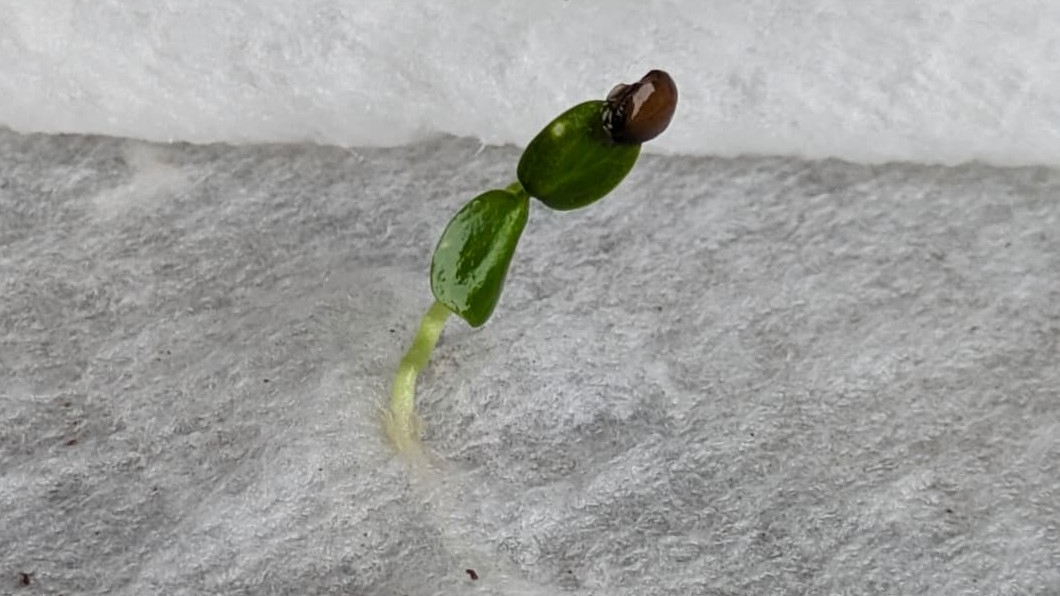
Seed jargony III: Endosperm and other nutritious tissues
June, 2025
We have a couple of distinctions to make according to our two groups of seed plants. That’s right, Angiosperms and Gymnosperms do not have the same kind of nutritious tissue for their seeds. But don’t worry, both nourish their seeds properly!
Let’s start with Gymnosperms. Gymnosperms have a nutritious tissue formed by the body of the cone-bearing plant. Since this tissue is formed from the female gamete (or gametophyte, as I mentioned earlier), it is haploid, meaning it only bears half of the genetic information (unlike us, who are diploid). Once fertilization occurs, the Gymnosperm embryo takes its nutrients from that gametophyte tissue. This is because they don’t have the double fertilization process that Angiosperms do.
On the other hand, the double fertilization of Angiosperms forms the endosperm. The endosperm is created by the fusion of one of the pollen nuclei with two nuclei from the female ovule. The endosperm is incredibly important because it provides nutrients to the embryo as it grows.
Now, there are two kinds of plants in this sense… and then there are the orchids. The first kind is like the bean, where the embryo completely absorbs the endosperm while the seed is developing. By the time of dispersal, there is no endosperm left; it’s all incorporated into the embryo and stored in the cotyledons (I’ll explain these in a later session). These are called non-endospermic or exalbuminous seeds.
The other kind is like a corn kernel, where the embryo only uses the endosperm when germination occurs, and most of the seed is endosperm. In fact, what you pop to make popcorn is the endosperm, as is cornstarch—just saying! These seeds are called endospermic or albuminous seeds.
And then there are the orchids. Sorry, orchid lovers, but these guys don’t invest much in their offspring. Neither their embryo nor their endosperm is well-developed, so they rely on a fungal association to be able to germinate.
That’s it for today. See you in July!
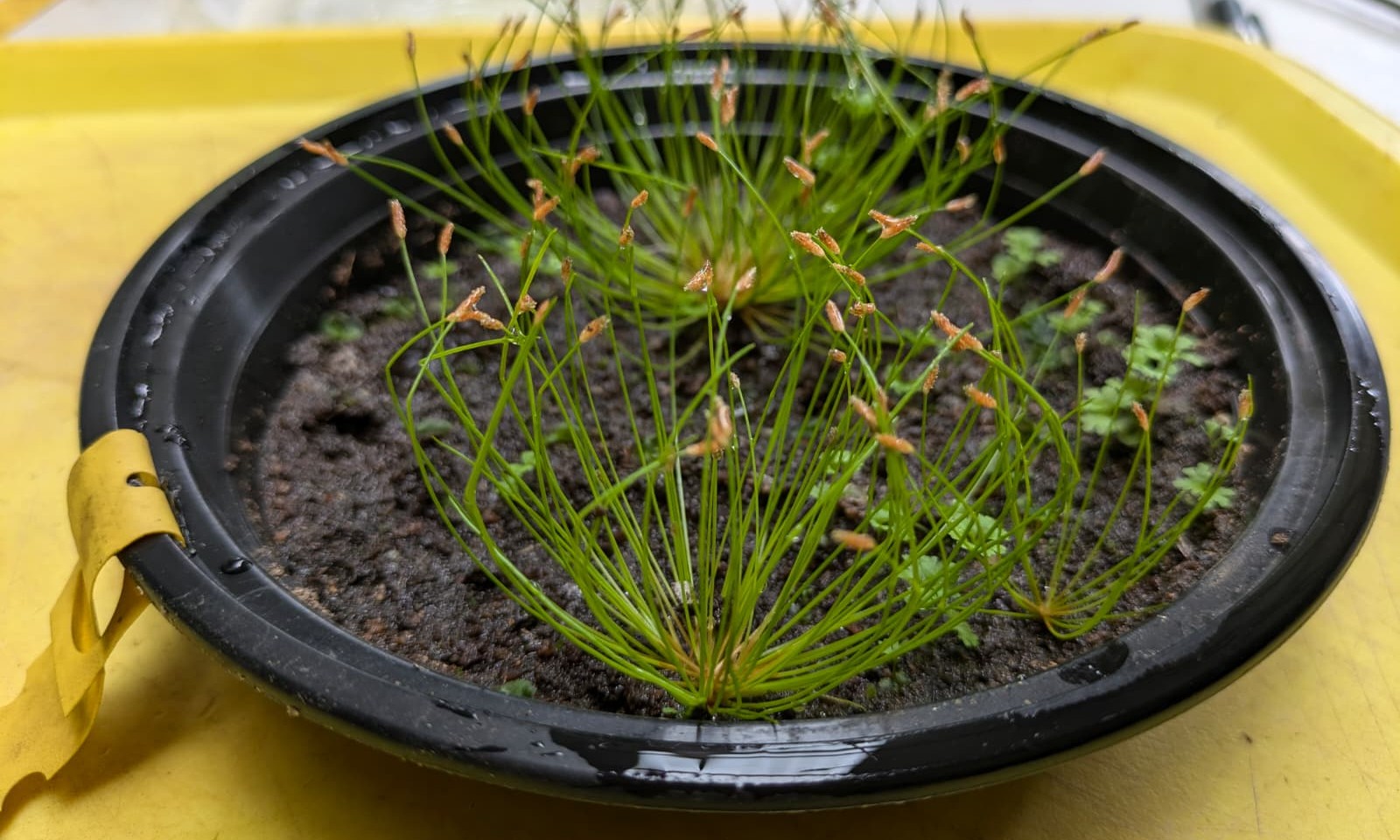
Special relativity and the seed dispersal
May, 2025
When I first defined the seed, I mentioned that seeds were like “time machines” and “space vehicles.” This is because one of their main functions is dispersal. Dispersal is precisely what it sounds like: the movement of a seed away from the parent plant. As a plant, you can’t move, but you can move your future generations and your genes with your seeds!
This movement can occur in both space and time, as Albert Einstein’s theory of special relativity proposes. To move in space, plants have equipped their fruits and seeds with special features that help them find new horizons. Here are some of the most common types of dispersal, because yes, with this topic, we can get as detailed as we want!
Anemochory: Wind-dispersed seeds. These seeds have wings, feathers, hairs, or aerodynamic shapes that allow them to fly or glide through the air.
Zoochory: Animal-dispersed seeds. There are two main kinds: those that travel inside the animal (endozoochory) and those that travel outside (ectozoochory). For endozoochory, picture a fruit that’s eaten and then… pooped out somewhere else. For ectozoochory, picture those little seeds that stick to your pants when you go hiking.
Autochory: Self-dispersed seeds. These plants didn’t make a fruit but rather an explosive device, a catapult, or something that can’t be reached easily. This type also includes seeds that are dispersed by gravity (a fancy way of saying they just fall from the tree).
Hydrochory: Water-dispersed seeds. These are the ones with flotation devices that allow them to cross entire oceans.
These are just a few common types of dispersal in space, and you can imagine that a seed can travel as far as another continent if the conditions are right.
The other category of dispersal is in time. Many species achieve this thanks to their dormancy—a concept we’ll explore later, but it’s basically the ability to wait. And believe me, seeds can wait for a long, long time. The oldest seed to have ever germinated was 32,000 years old! This means that many generations of its family passed, and yet it kept its genes intact and ready to grow for over three ten-thousands of years. Honestly, Einstein should have studied seeds.
That’s it for this month. I hope you’ve learned and enjoyed it. See you in June!
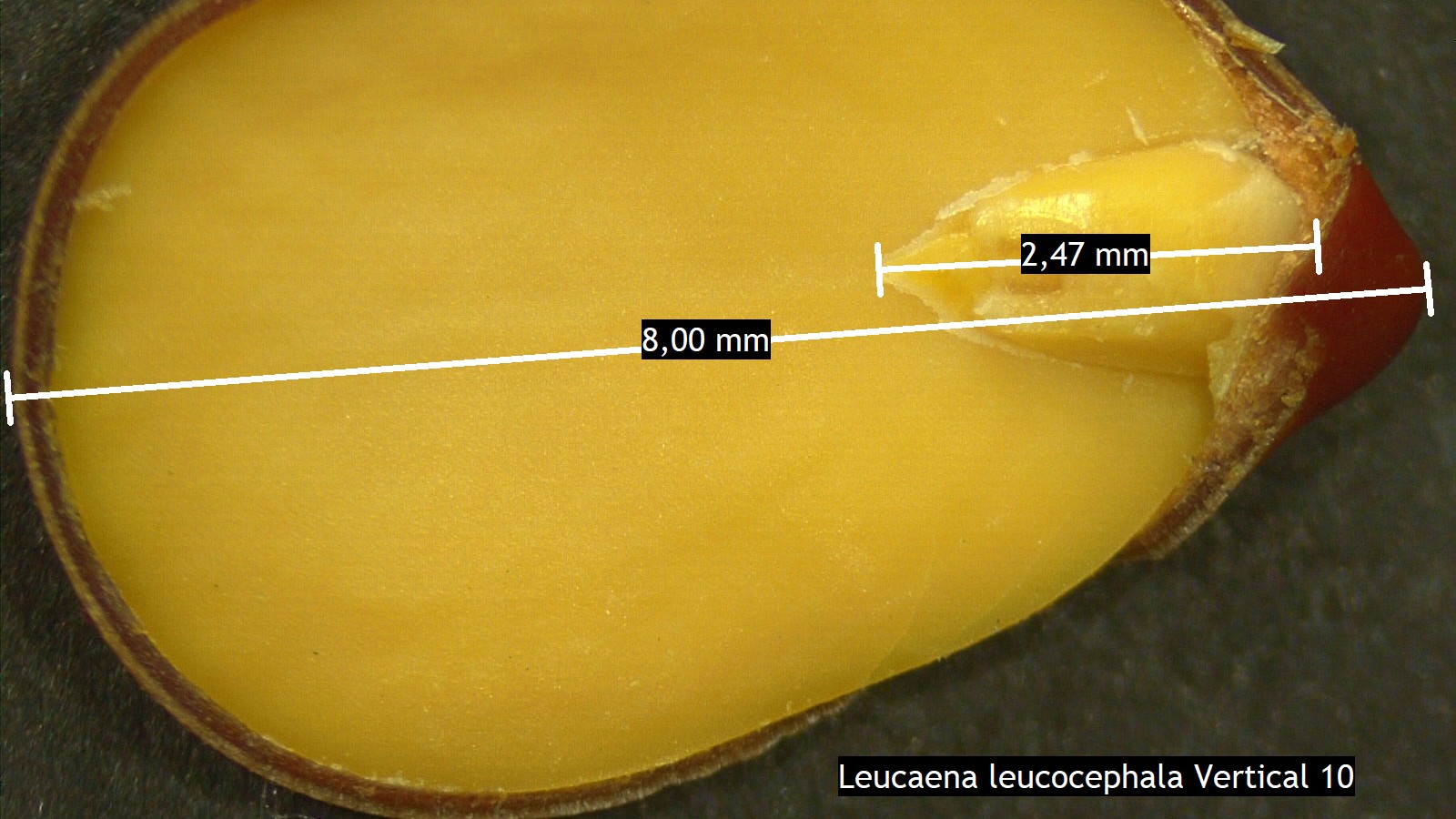
Seed jargony II: Seed embryo
April, 2025
Let’s continue with our Jargony section by properly defining the baby plant, or embryo. I’ll just call it “embryo” from now on!
The embryo is the result of the union between two plant gametes: the ovule and the pollen. The ovule is like a human ovum, and pollen is like human sperm. These two join together through a process called pollination. In Gymnosperms (think conifers), pollination is usually carried by the wind. In Angiosperms (flowering plants), it can be carried by anything you can think of: wind, water, a bee, a bat, a fox, you, or me!
Once fertilization happens, the embryo begins its initial development inside the maturing seed. By the time the seed is mature enough to disperse from the plant, embryos can vary greatly among species. Some species have embryos that grow to fill the entire seed, while others have embryos that only partially occupy the seed. Others, like orchids, have extremely underdeveloped embryos at the time of dispersal.
These differences mean that each species has a unique germination strategy. Some seeds are almost ready to grow right away, while others need time to use their stored nutrients before they can begin to grow. When we explore germination later, I’ll go into detail about the exciting transition from an embryo to a seedling.
I hope you learned something today! See you in May.
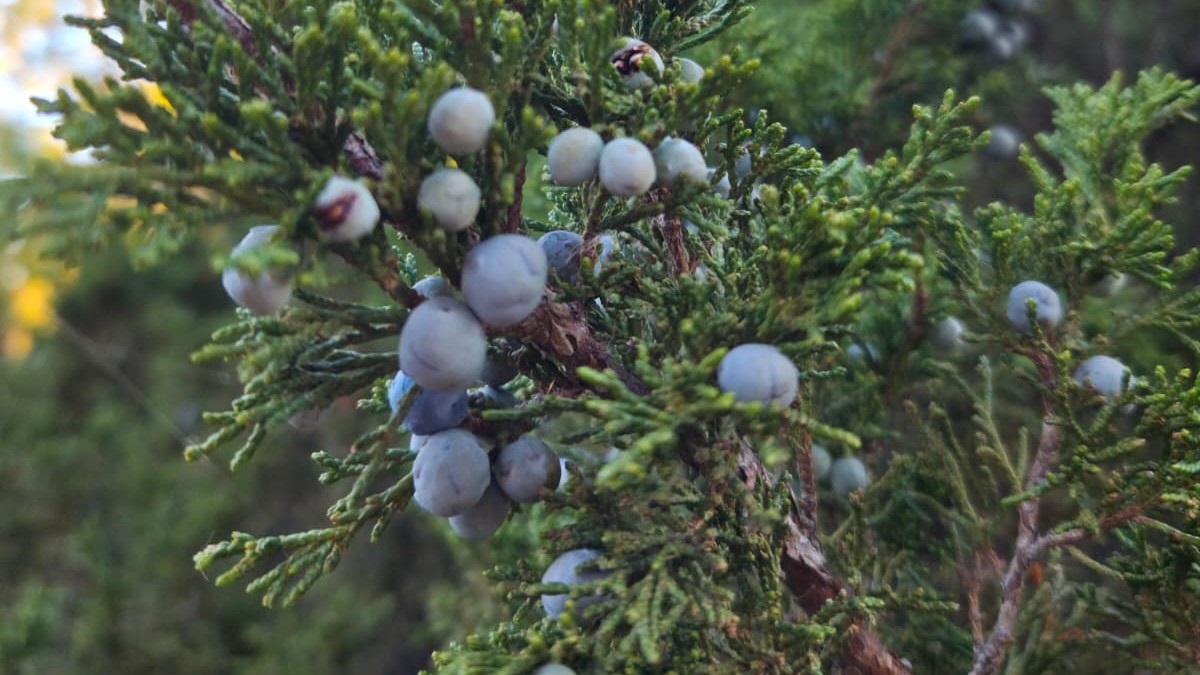
Contained vs. naked seeds
March, 2025
One of the many things I left hanging from previous posts is the mention of the two main plant groups that have seeds: the Gymnosperms and the Angiosperms. In a strict evolutionary sense, both came up with a different version of what a seed is, but they both contain the three main parts: a coat, an embryo, and a food supply. Let’s briefly explore these two groups and their fascinating seeds.
Angiosperms, which Charles Darwin called “the abominable mystery,” are the real winners. They’ve established themselves in a vast variety of environments (the only vascular plant living in Antarctica is an Angiosperm—a grass, no less!). These famous flowering plants have evolved a very complex method of reproduction called double fertilization, which results in a contained, not naked seed.
Let’s talk about flowers and sex. In Angiosperms, the ovule is contained within the ovary of the flower. When pollen arrives, it contains more than one nucleus (plant cells are on another level when it comes to genetic charge; instead of just two copies like us humans, they can have up to eight!). One part of the pollen fuses with a nucleus in the ovule to form the baby’s lunch (called the endosperm in some plants), while the other part forms the embryo itself. This double fertilization happens inside the ovary, which then develops into the fruit. The fruit acts as a container, which is essential for our next topic—dispersal—because it provides extra structures that not only protect the seed but also help it reach the most remote places in the world, such as Antarctica.
Although Gymnosperms came first in evolutionary history, I prefer to explain them after Angiosperms because they “lack” something—and the only way to define a lack is by knowing what it’s missing. Gymnosperms are the famous pines, firs, and redwoods—the oldest, tallest, and widest trees on our planet. A key trait is that most of them form cones, hence their other common name: Conifers.
Conifer seeds are the naked seeds. This is because their embryo is not contained in an ovary; it just lies there, exposed on one of the scales of the cone. The nutritious part of these conifer seeds—their lunch—is formed from their mother’s tissue (called the female gametophyte, if you want to sound more sophisticated… but let’s not). Since this food supply comes only from the mother, it has a distinct genetic makeup compared to the embryo.
In both cases, my main message is that a seed is a multigenerational structure. It contains parts from the parents and a new plant generation. It’s like seeing a pregnant person, but zipped!
As always, I hope you’re a little more aware of plants now. See you next month.
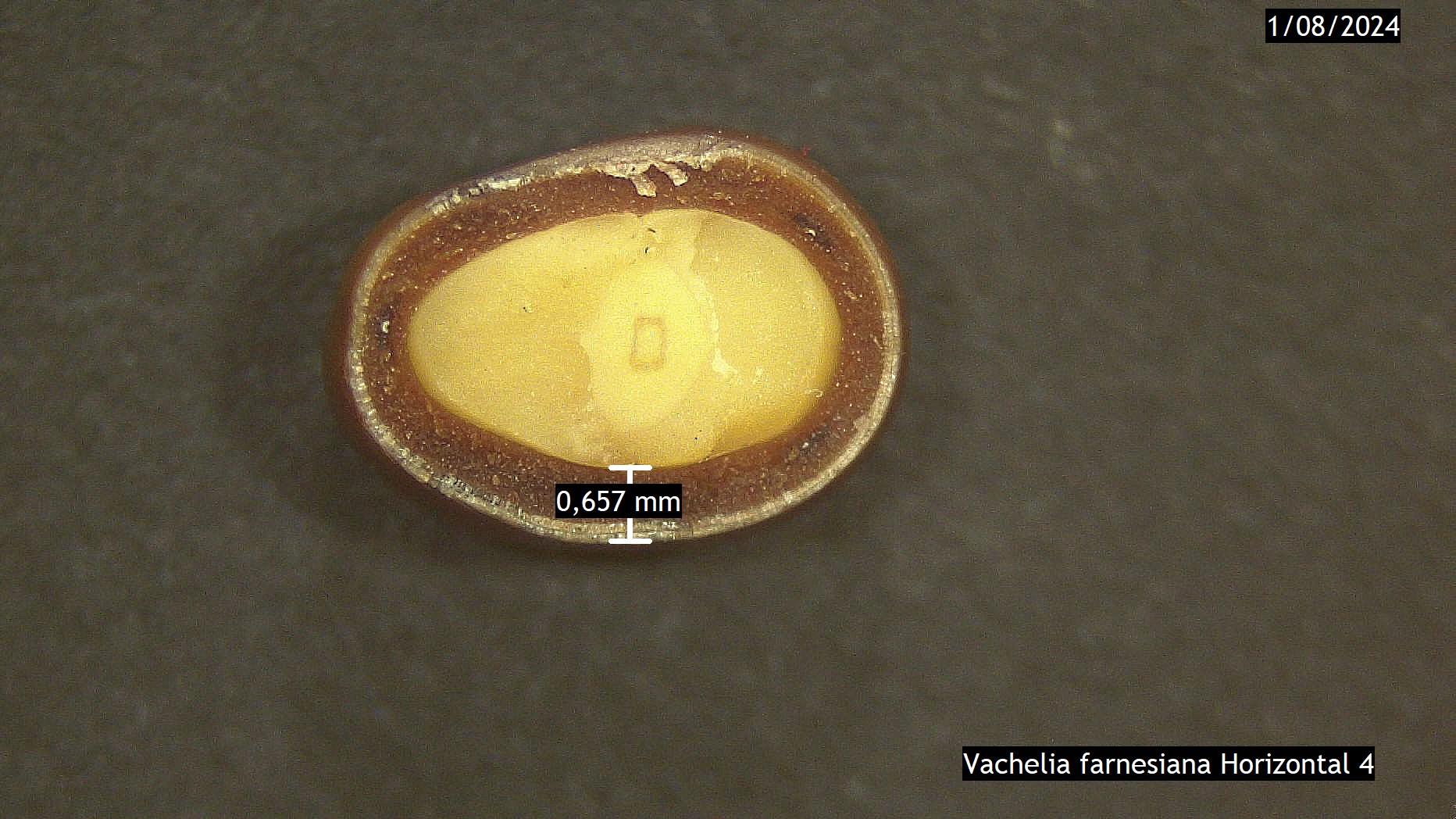
Seed jargony I: Seed coat
February, 2025
New year, new blog section! In these “Seed Jargony” entries, we’ll explore some fundamental concepts in seed biology. Let’s start with the seed coat.
As I mentioned before, one of the key parts of a seed’s definition is its coat. You can picture it like a human coat or clothing: a protective layer that covers the most essential parts, shielding them from the outside world.
Just as each country has its own typical costume, each plant species has its own unique seed coat. Some are hard and waterproof; others are delicate and paper-thin. The main role of the seed coat is to protect the embryo (the baby plant) from external threats like diseases or abrasion from the soil.
However, the seed coat has another crucial role: it acts as a sensor for the environment, telling the seed when to germinate. We’ll explore germination later, but it’s important to know that when germination occurs, the seed coat releases hormones that help the embryo absorb the nutrients its “mom” saved for it.
And just like when you were a child and eventually outgrew your favourite clothes, seeds also shed their coats. Some break down the coat as they grow, while others simply let it fall unceremoniously into the soil, where it becomes part of the ecosystem.
I hope this definition gives you a clearer picture of the seed coat. See you in March!
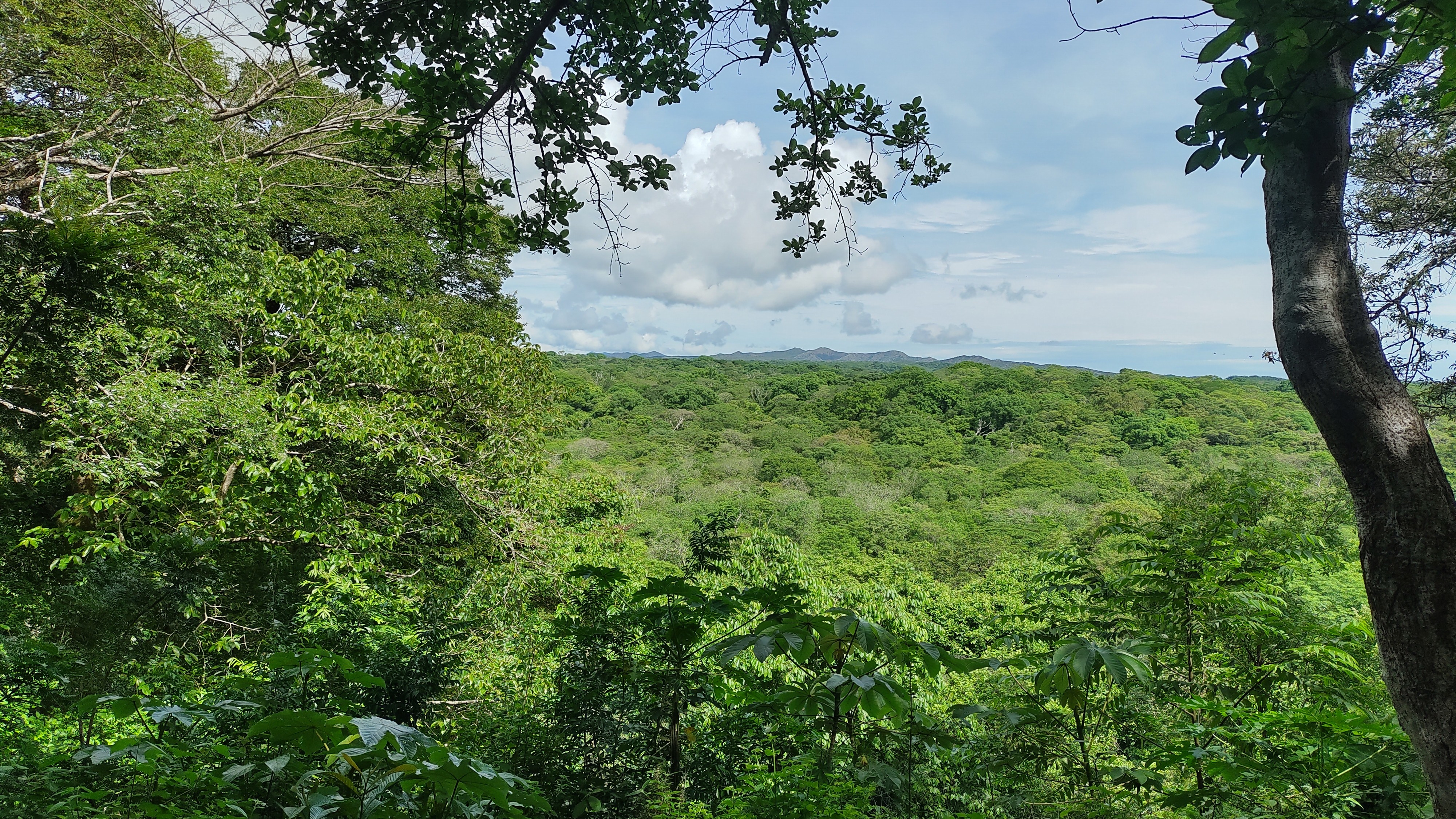
Why should you care about the biology of seeds and seedlings?
January, 2025
Happy New Year!
I was reflecting on how to start the blog this year. Although I promised the “Seed Jargony” section, I realized I haven’t properly explained why these seeds and seedlings matter so much. This is particularly crucial to me, as the main goal of this blog is to connect the general public to the fascinating science of seeds.
This topic goes far beyond biology classes. Think about it: most of our food, clothing, and even our houses come from plants — and plants begin with seeds. Human history itself is tightly linked to seeds: when early humans shifted from nomadic lifestyles to farming, it was because they learned to study and manage seeds. That discovery — agriculture — shaped civilisation as we know it.
Early humans realized they needed to understand seeds to domesticate plants and make them grow when and where they were needed. We now know a lot about the commercially used plants, but we still have hundreds of thousands of species that could potentially be used to heal our planet. These are the plants that interest me, especially the ones that can help us restore our forests.
As humans, we sometimes forget that we are part of nature and, as a result, don’t always use it in a way that ensures its long-term survival. This has happened to the very forests that provide the oxygen we breathe, the food we eat, and the materials for our homes. We should be more interested in recovering these ecosystems so they can continue to thrive and provide for us. After all, we live in a mutualistic relationship with nature.
That is why I study the seeds and seedlings of species that are often ignored, especially those in tropical forests. I want to understand how they continue to exist, grow, and face environmental hardships in their stationary way of living. Maybe this sounds too romantic, but we need to start appreciating and loving all the living things around us. And the only way to truly appreciate and love them is to get to know them.
See how I didn’t mention seeds much in this post, but I’m sure you’re thinking about them now. As this new year begins and you become more aware of plants, keep visiting this blog. Get to know them, and I’m sure you’ll love them as much as I do.
Think about it, and I’ll see you in February!
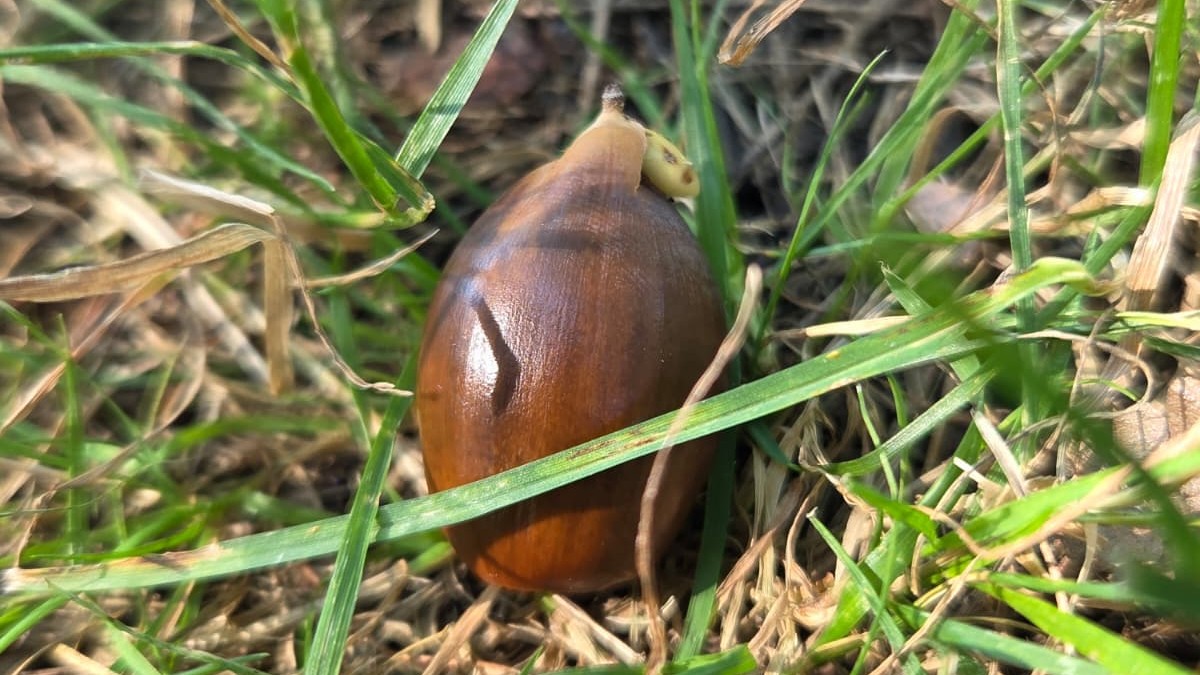
So… What Is a Seed, Anyway?
December, 2024
I know you have been reading this blog for two months, and I haven’t been thorough enough to provide a clear definition of what a seed is. As a plant biologist, I had to start with the dates and the evolution. It is also hard to provide an exact definition because seeds are many things at a time: - A prospective plant - A space vehicle - A time machine - Multigenerational structure I know that probably leaves you with more questions than answers. That’s what happens when you ask a scientist for a “clear, not an it-depends” kind of answer.
Don’t worry, we’ll explore all of these definitions in future posts. But for now, let’s keep it short and sweet. Simply put, a seed is a potential plant. More technically, it’s a fertilized ovule that contains three main parts:
An embryo (the baby plant)
A food supply (its lunch bag)
An enclosing seed coat (its protective armor)
We’ll unpack each of these parts in more detail in a new section of the blog called “Seed Jargony.” Every other month, we’ll dive I nto one piece of seed terminology. Think of it as a growing mini-dictionary you can come back to whenever you need a refresher.
This post is brief because I want to devote each of those complex definitions to the attention it deserves in future entries. I promise that when we explore these ideas, you’ll be glad I didn’t try to cram them all into one sentence!
Happy end of the year, and see you next year!
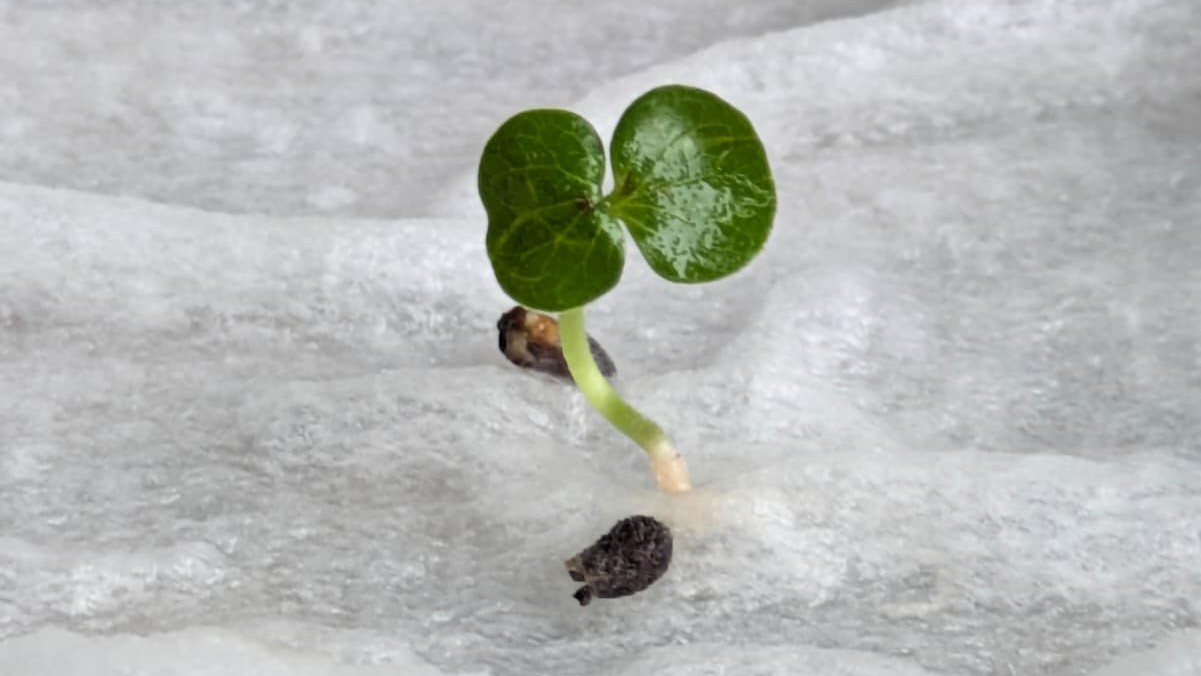
One seed at a time
November, 2024
Hopefully, after the previous reading, you’ve started noticing plants, because today we will begin a unique journey into their wonderful world. You might wonder why I called it “unique” and “wonderful.” Maybe that’s my ego sneaking in (this blog is certainly not unique). But I can promise you this: their world is wonderful—sometimes in quiet, subtle ways that words barely capture.
Enough of my rambling. Let’s challenge plant blindness with a simple exercise. Go find a seed. No excuses—it can be cooked, raw, wild, from a fruit in your fridge, a jar in your cupboard, or even from jewelry. Hold the seed in your hand and look at it. Would you believe me if I told you that you’re holding a product from a history spanning hundreds of millions of years?
Approximately 470 million years ago, plants began to explore the land. A few million years later, around 365 to 400 million years ago, it became clear that if they wanted to establish and expand effectively, they needed a solution. That solution was the seed. This dramatic innovation changed our perception of what a plant is and what it can do.
Seeds were revolutionary. Seeds essentially were and are a “better baby plant”: one that could travel away from its parent (dispersal), carry a lunch bag of nutrients (nutrition), stay protected from damage and predators (protection), and decide the best time to grow (dormancy). That combination was so successful that plants became the dominant life form we know today.
Seeds shaped the plant kingdom so profoundly that two of its largest groups are named after the Greek word sperma (seed): angiosperms (“seeds contained”) and gymnosperms (“seeds naked”).
So the next time you hold a seed, remember: it’s not just a tiny object. It’s the legacy of ancient innovation, a survival strategy millions of years in the making—and maybe the beginning of a forest.
We will learn about these very fundamental and ancient structures on our blog. So if you’d like to keep learning more, see you in December.

Have you ever noticed the plants?
October, 2024
When I was outlining this blog, I wrote down a lot of ideas. I thought about seeds, my PhD, how I got here, or maybe even telling the story of a specific plant. But after many conversations, I realized I had to start further back: with the plants themselves. Our society seems to ignore them all the time. There’s even a term that has become trendy lately to describe this: plant blindness.
Plant blindness is the inability of humans to notice these green living beings that surround us every day. Think about it: how many times have you been walking and a cat crosses your path? You see the cat, but you don’t see the grass, the tree, the bush, the leaf, or the flower. They are all part of the same landscape, yet we often ignore them as if they were just background filler. Does this happen to you? It doesn’t happen to me—I’m a botanist and a plant biologist!
Still, you can also start to see them by becoming aware of what wonderful organisms they are. Plants are sessile, meaning they cannot move on their own (no, it doesn’t count when you move the pot!). This quality has forced them to develop incredible strategies to survive environmental changes and become so successful that it remains a mystery to evolutionary biologists why we have so many plant species.
Imagine this: if it rains, they can’t take shelter. If the sun is too intense, they can’t seek shade. They don’t dodge obstacles, and if you build your house next to them, they have no choice but to become your neighbors. But don’t worry, you can overcome plant blindness. Just look at them on your way and start to notice all their shapes, colors, and smells. Try to guess what they’re doing to survive in that corner where you always see them.
I’m sure that after reading this, you’ll start to see them. And I haven’t even mentioned oxygen and other ecosystem services yet!
Well, see you in November.
P.S.: I partially lied... When they are seeds, they do move.